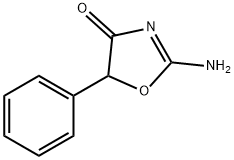- Pemoline
- PEMOLINE MAGNESIUM
- 215239-53-51H-Benzimidazole, 6-bromo-4-methyl-2-propyl-
- 21524-34-5Benzene,2-bromo-1,3,5-tris(1-methylethyl)-
- 21524-39-0Benzonitrile,2,3-difluoro-
- 2152-44-5Betamethasone 17-valerate
- 215247-95-3Diindolo[2,3-c:2',3'-n]triphenodioxazine,9,19-dichloro-5,15-diethyl-5,15-dihydro-
- 215253-76-22-(Chloromethyl)-3-methoxypyridine
- 215254-91-4Carbamic acid,N-(2-isocyanoethyl)-, 1,1-dimethylethyl ester
- 21528-12-1Imidodicarbonimidicdiamide, N-(7-hydroxy-1-naphthalenyl)-, hydrochloride (1:?)
- 215302-77-5D-Phenylalanine,N-[(1,1-dimethylethoxy)carbonyl]-4-[[[(9H-fluoren-9-ylmethoxy)carbonyl]amino]methyl]-
- 215305-98-9Carbamic acid,N-[2-(3-piperidinyl)ethyl]-, 1,1-dimethylethyl ester
Hot Products
- 104987-11-3Tacrolimus
- 141-53-7Sodium formate
- 8001-54-5Quaternary ammonium compounds, alkylbenzyldimethyl, chlorides
- 9003-39-8Povidone
- 10161-34-9Trenbolone acetate
- 402957-28-2Telaprevir
- 68-19-9Cyanocobalamin
- 7631-86-9Silicon dioxide
- 302-79-4Tretinoin
- 77-92-9Citric acid

|
Basic Information |

|
Post buying leads |

|
Suppliers |

|
Cas Database |

 This product is a nationally controlled contraband, and the Lookchem platform doesn't provide relevant sales information.
This product is a nationally controlled contraband, and the Lookchem platform doesn't provide relevant sales information.
| Name |
Pemoline |
EINECS | 218-438-8 |
| CAS No. | 2152-34-3 | Density | 1.4 g/cm3 |
| PSA | 64.68000 | LogP | 0.73510 |
| Solubility | N/A | Melting Point |
255-256 °C |
| Formula | C9H8N2O2 | Boiling Point | 313.561 °C at 760 mmHg |
| Molecular Weight | 176.175 | Flash Point | 143.437 °C |
| Transport Information | N/A | Appearance | White to off-white crystalline powder |
| Safety | 16-26-36/37/39-45 | Risk Codes | 11-22-34 |
| Molecular Structure |
|
Hazard Symbols |
 Xn, Xn, C, C, F F
|
| Synonyms |
2-Oxazolin-4-one,2-amino-5-phenyl- (7CI);4-Oxazolidinone, 2-imino-5-phenyl- (6CI);2-Amino-5-phenyl-1,3-oxazol-4(5H)-one;2-Amino-5-phenyl-2-oxazolin-4-one;2-Imino-4-keto-5-phenyltetrahydrooxazole;2-Imino-4-oxo-5-phenyloxazolidine;2-Imino-5-phenyl-4-oxazolidinone;5-Phenyl-2-imino-4-oxooxazolidine;5-Phenyl-2-iminooxazolidin-4-one;Azoksodon;Azoxodon;Centramin;Dantromin;Deltamine;Hyton;Hyton Asa;Kethamed;Nitan;Okodon;Pemolin;Pheniminooxazolidinone;Phenoxazole;Phenylisohydantoin;Phenylpseudohydantoin;Pioxol;Pondex;Ronyl;Senior;Sigmadyn;Sistra;Stimul;Tradon;Tradone;Volital;Yh 1; |
Article Data | 10 |
Pemoline Chemical Properties
Molecular Structure of Pemoline (CAS NO.2152-34-3):

EINECS: 218-438-8
IUPAC Name: 2-Amino-5-phenyl-1,3-oxazol-4-one
Molecular Formula: C9H8N2O2
Molecular Weight: 176.172020 g/mol
XLogP3-AA: 0.9
H-Bond Donor: 1
H-Bond Acceptor: 3
Canonical SMILES: C1=CC=C(C=C1)C2C(=O)N=C(O2)N
InChI: InChI=1S/C9H8N2O2/c10-9-11-8(12)7(13-9)6-4-2-1-3-5-6/h1-5,7H,(H2,10,11,12)
InChIKey: NRNCYVBFPDDJNE-UHFFFAOYSA-N
Index of Refraction: 1.655
Molar Refractivity: 46.13 cm3
Molar Volume: 125.6 cm3
Surface Tension: 56.1 dyne/cm
Density: 1.4 g/cm3
Flash Point: 143.4 °C
Enthalpy of Vaporization: 55.46 kJ/mol
Boiling Point: 313.6 °C at 760 mmHg
Vapour Pressure: 0.000493 mmHg at 25 °C
Melting Point: 255-256 °C
Water Solubility: 3.401e+005 mg/L at 25 °C
Pemoline Production
α-Hydroxy acid is obtained by condensation and hydrolysis of benzaldehyde with chloroform , and then pemoline is obtained by esterification, cyclization of α-hydroxy acid.
Pemoline Toxicity Data With Reference
| 1. | orl-man TDLo:536 µg/kg | JCPYDR Journal of Clinical Pyschopharmacology. 3 (1983),331. | ||
| 2. | unr-cld TDLo:66 µg/kg/4W-I:SYS | SMJOAV Southern Medical Journal. 77 (1984),938. | ||
| 3. | orl-rat LD50:436 mg/kg | PBPSDY Pharmacological and Biochemical Properties of Drug Substances. 1 (1977),33. TXAPA9 Toxicology and Applied Pharmacology. 21 (1972),315. | ||
| 4. | orl-mus LD50:375 mg/kg | PBPSDY Pharmacological and Biochemical Properties of Drug Substances. 1 (1977),33. | ||
| 5. | ipr-mus LD50:365 mg/kg | PBPSDY Pharmacological and Biochemical Properties of Drug Substances. 1 (1977),33. | ||
| 6. | orl-bwd LD50:100 mg/kg | TXAPA9 Toxicology and Applied Pharmacology. 21 (1972),315. |
Pemoline Safety Profile
Safety Information of Pemoline (CAS NO.2152-34-3):
Hazard Codes: Xn  , C
, C  , F
, F 
Risk Statements: 22-34-11
R22:Harmful if swallowed
R34:Causes burns
R11:Highly flammable
Safety Statements: 16-26-36/37/39-45
S16:Keep away from sources of ignition
S26: In case of contact with eyes, rinse immediately with plenty of water and seek medical advice
S36/37/39:Wear suitable protective clothing, gloves and eye/face protection
S45:In case of accident or if you feel unwell, seek medical advice immediately (show the label whenever possible.)
RTECS: PB8750000
A poison by ingestion and intraperitoneal routes. Human systemic effects: hepatitis. An experimental teratogen. A central nervous system stimulant. When heated to decomposition it emits toxic fumes of NOx.
Pemoline Specification
Pemoline with CAS registry number of 2152-34-3 is white solid. It is incompatible with strong oxidizing agents. Pemoline is also known as Pemoline [USAN:INN:BAN:JAN] ; 2-Amino-5-phenyl-4(5H)-oxazolone ; 2-Imino-4-keto-5-phenyltetrahydrooxazole ; 2-Imino-5-phenyl-4-oxazolidinone ; 2-Inino-5-phenyloxazolidin-4-one ; 5-Phenyl-2-imino-4-oxazolidinone ; 5-Phenyl-2-imino-4-oxooxazolidine ; 5-Phenylisohydantion ; A 13397 ; AI3-61124 ; Abbott 13397 ; Azoksodon ; Azoxodon ; Azoxodone ; Betanamin ; C- 293 ; CS 293 ; Centramin ; Constimol ; Cylert ; Dantromin ; Deltamin (VAN) ; Deltamine ; Endolin ; FWH-352 ; Fenoxazol ; Fio ; H 310 ; H 3104 ; HSDB 3148 ; Hyton ; Juston-wirkstoff ; Kethamed ; LA 956 ; Myamin ; NPL 1 ; NSC 169499 ; NSC 25159 ; Nitan ; Notair ; Okodon ; PIO ; PN/135 ; PT 360 ; Pemolin ; Pemolina ; Pemolina [DCIT] ; Pemolina [Italian] ; Pemolinum ; Pemolinum [INN-Latin] ; Phenalone ; Phenilone ; Pheniminooxazolidinone ; Phenoxazole ; Phenylisohydantoin ; Phenylpseudohydantoin ; Pioxol ; Pondex ; Ronyl ; Sigmadyn ; Sistra ; Sofro ; Stimul ; Stimulol ; Tradon ; Tradone ; UNII-7GAQ2332NK ; Volital ; Volitol ; Yh 1 ; 4(5H)-Oxazolone, 2-amino-5-phenyl- ; 4-Oxazolidinone, 2-imino-5-phenyl- ; DEA No. 1530 ; Pemoline (including organometallic complexes and chelates thereof) . It is a kind of central nervous system stimulant drugs for the treatment of brain function disorders, light excellent depressive disorder, narcolepsy and so on. However, it has many adverse reactions such as hepatotoxicity, liver failure. The mechanism is to inhibit the reuptake of dopamine and to increase the release of dopamine and norepinephrine in the central nervous system.